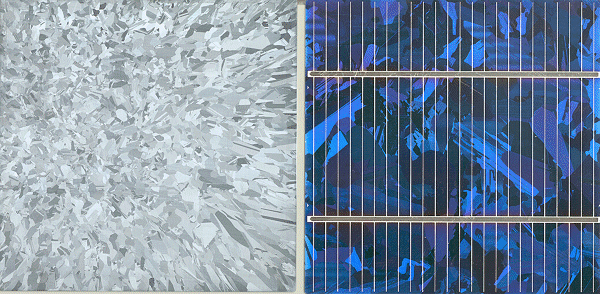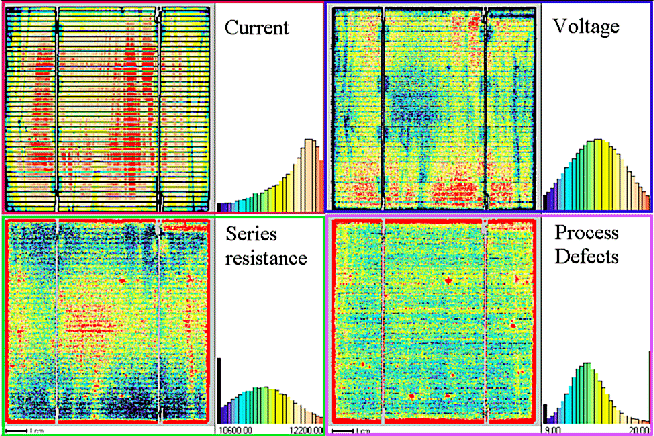 |
Here is a typical poly-Si slice and a solar cell made from a similar slice.
The dimensions are 10 cm x 10 cm. |
|
 |
While the poly-Si slice is relatively fine grained (probably form about
1993), the solar cell (from about 1998) shows coarser grain structures - demonstrating the progress made in casting technology
|
| |
|
|
 |
How good are polycrystalline solar cells? Not too bad, actually, but not as good as solar
cells from very good single crystals. |
 |
Below are four color coded maps showing essential parameters lod solar cells locally
. These maps are not easy to obtains; they result from a new technique, developed by a university of Kiel research group,
called "CELLO" (short for "Cell Local").
More details via the link. The parameters measured are: |
|
 |
"Current", meaning the maximum (short-circuit
current) that can be drawn from a pixel. |
|
 |
"Voltage", meaning the voltage a pixel would
produce if it would be an isolated cell by itself. |
|
 |
"Series resistance
", essentially meaning the ohmic resistance that would be found in an equivalent circuit for one pixel |
|
 |
"Process defects", a lumped parameter that displays
serious local problems like, e.g., locally leaking pn-junctions. |
|
|
© H. Föll (Semiconductors - Script)


![]() 3.1.3 Mechanical, Thermal and Other Properties
3.1.3 Mechanical, Thermal and Other Properties